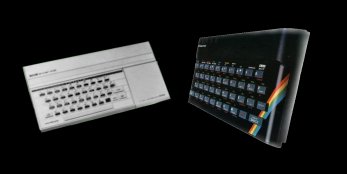
A short list of Timex/Sinclair 2000 series keywords not found on the ZX Spectrum.
Overview
As the Timex/Sinclair 2000 series (specifically the 2068) was intended for the US home computer market some keywords were added.
Commands
Keyword
Meaning
Comments
DELETE
i)
DELETE xii)
DELETE x,yiii)
DELETE ,yResult i: Delete program lines from line x to end of program.
Result ii: Delete program lines from line x to line y.
Result iii) Delete program lines from start of program to line y.

Many machine code programs exist to give the equivelent of DELETE on the ZX Spectrum.
RESET
RESETResult : Resets peripherals (manual is unclear about this).

The keyword RESET only replaces '©' whilst in 'K' mode.
Statements
Keyword
Meaning
Comments
ON ERR
i)
ON ERR GO TO mii)
ON ERR CONTINUEiii)
ON ERR RESET mResult i: If an error occurs go to line m.
Result ii) Program execution will resume at the point the error occured.
Result iii) Error trapping is turned off.

RESET is obtained by entering extended mode and pressing CAPS-SHIFT and 'P'
The keyword ON ERR replaces the character '{' whilst in 'K' mode.
The keyword RESET only replaces '©' whilst in 'K' mode.
Error trapping on a standard ZX Spectrum must be done by foreseeing potential errors before they occur. For instance, a division by zero can be avoided by checking that the denominator in a division is not zero.
Many extended BASIC's for the Spectrum contain error trapping, for example BETA BASIC.
SOUND
SOUND m,n [;...]Where m is the register and n is the value to be placed in that register.
Result : Sends instructions to the sound chip's registers.

Functions
Keyword
Meaning
Comments
FREE
No operands are required.
Typical usage would be:
PRINT FREEReturns: Amount of free memory available.

The keyword FREE replaces the character '~'.
On the ZX Spectrum free space can be found by :
PRINT (PEEK 23730+256*PEEK 23731)-USR 7962STICK
STICK (m,n)Where m is the device type and n is the joystick number (see table below).
Typical usage would be:
IF STICK (1,2)=1 THEN LET x=x+1Returns: An integer depending on the direction the joystick has moved or if a button has been pushed.
The device number m can be:
When m=1 the device is the joystck
When m=2 the device is the push button
The direction n can b:
if n=0 then joystick is centred
if n=1 then direction is up
if n=5 then direction is up and left
if n=4 then direction is left
if n=6 then direction is left and down
if n=2 then direction is down
if n=10 then direction is down and right
if n=8 then direction is down
if n=9 then direction is up and right

The keyword STICK replaces the character '|'.
On the ZX Spectrum joysick positions are usually found with IN m, where m is the I/O address of the joystick.
Nomenclature
This list uses the same letters to represent variables, expressions and sequences etc. as the ZX Spectrum BASIC manual.α,β represents a single letter
v represents a variable
x,y,z represents numerical expressions
m,n represents numerical expressions rounded to the nearest integer
b represents a 16 bit binary number
e represents an expression
f represents a string valued expression
s represents a sequence of statement separated by colons :
c represents a sequence of colour items, each terminated by commas , or semi-colons ; A color item has the form of a PAPER, INK, FLASH, BRIGHT, INVERSE or OVER statement.
Items in italics are parameters in explanatory word form.
A short note on brackets. Where curved brackets '(' or ')' are shown they are mandatory, this includes the ZX Spectrum 'two parameter' functions and user defined functions.
Where square brackets '[' or ']' are shown the statement, parameter or value inside the bracket is optional.
References
Sinclair ZX Spectrum BASIC Programming, Steven Vickers (author), Robin Bradbeer (editor)Timex Sinclair 2068 Personal Color ComputerUser Manual, Charles F. Durang (author)
External Links
T/S 2068 Manual at Kio's Sinclair ZX Computers ArchiveT/S 2068 at www.timexsinclair.com
ZX Spectrum manual for download at retro 8-bit computers
Last revision : 01/10/2023
